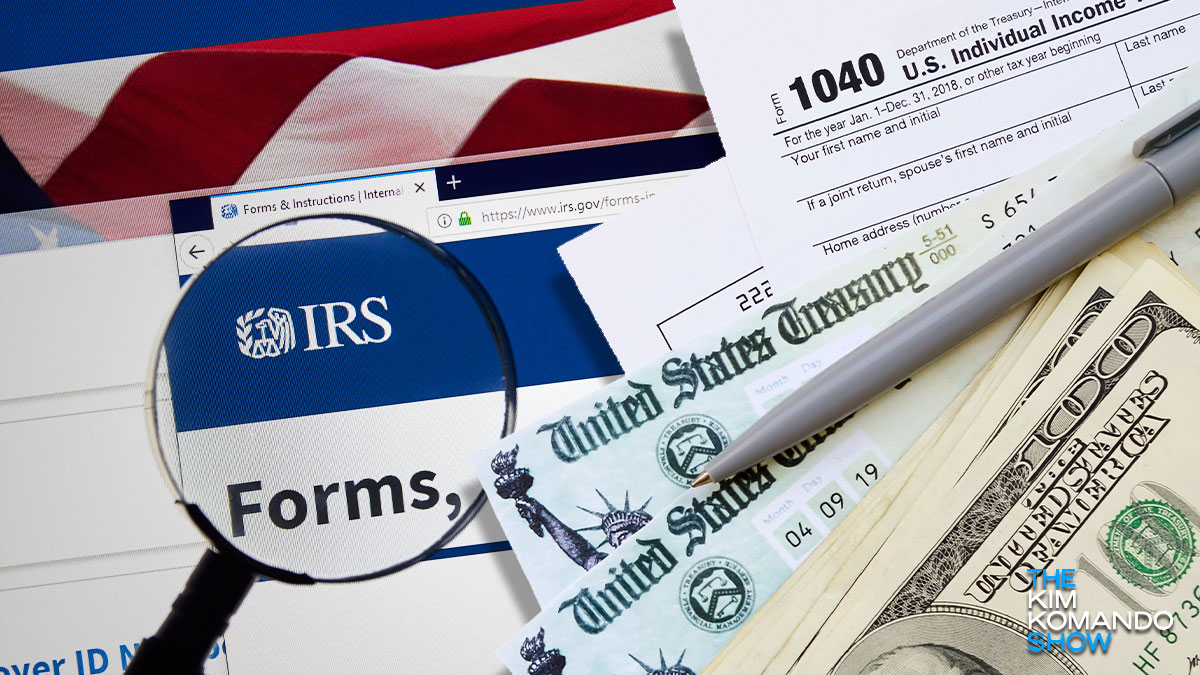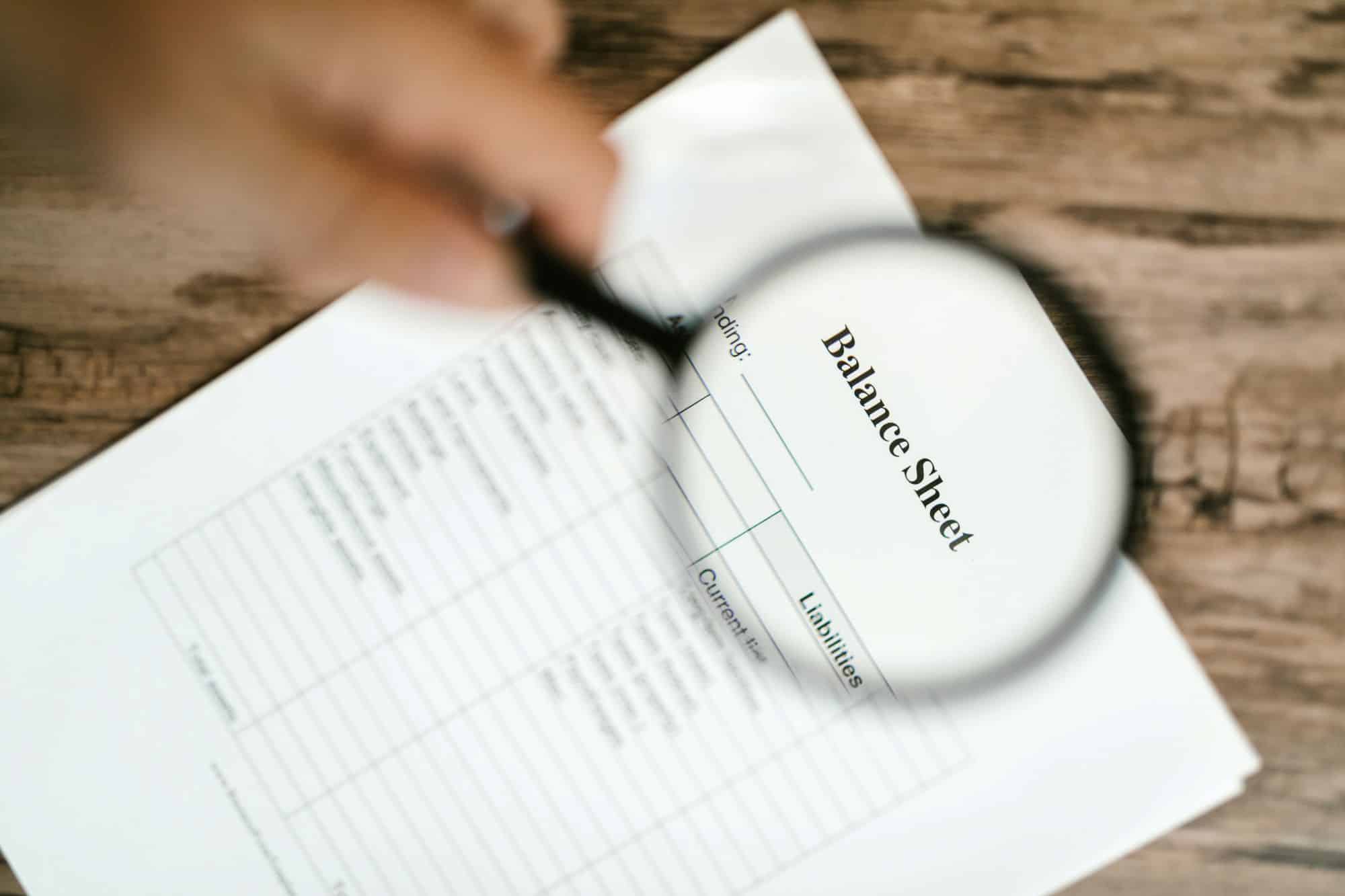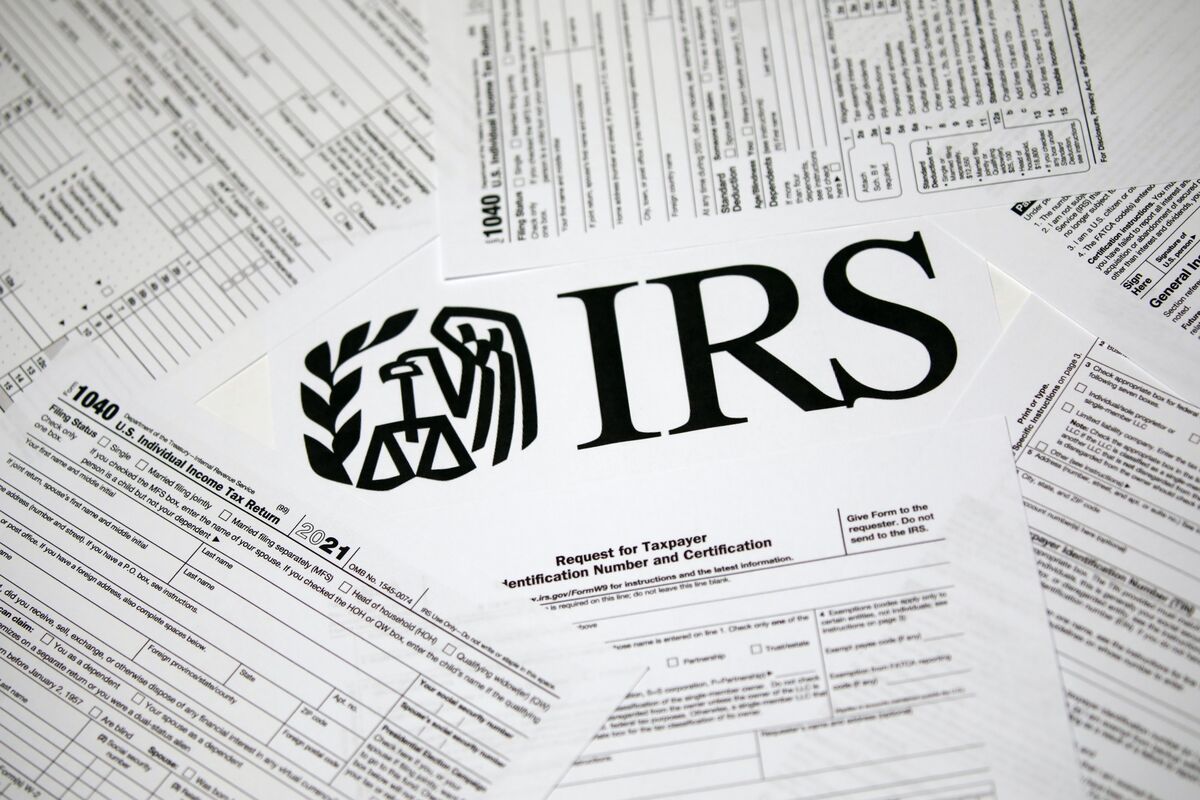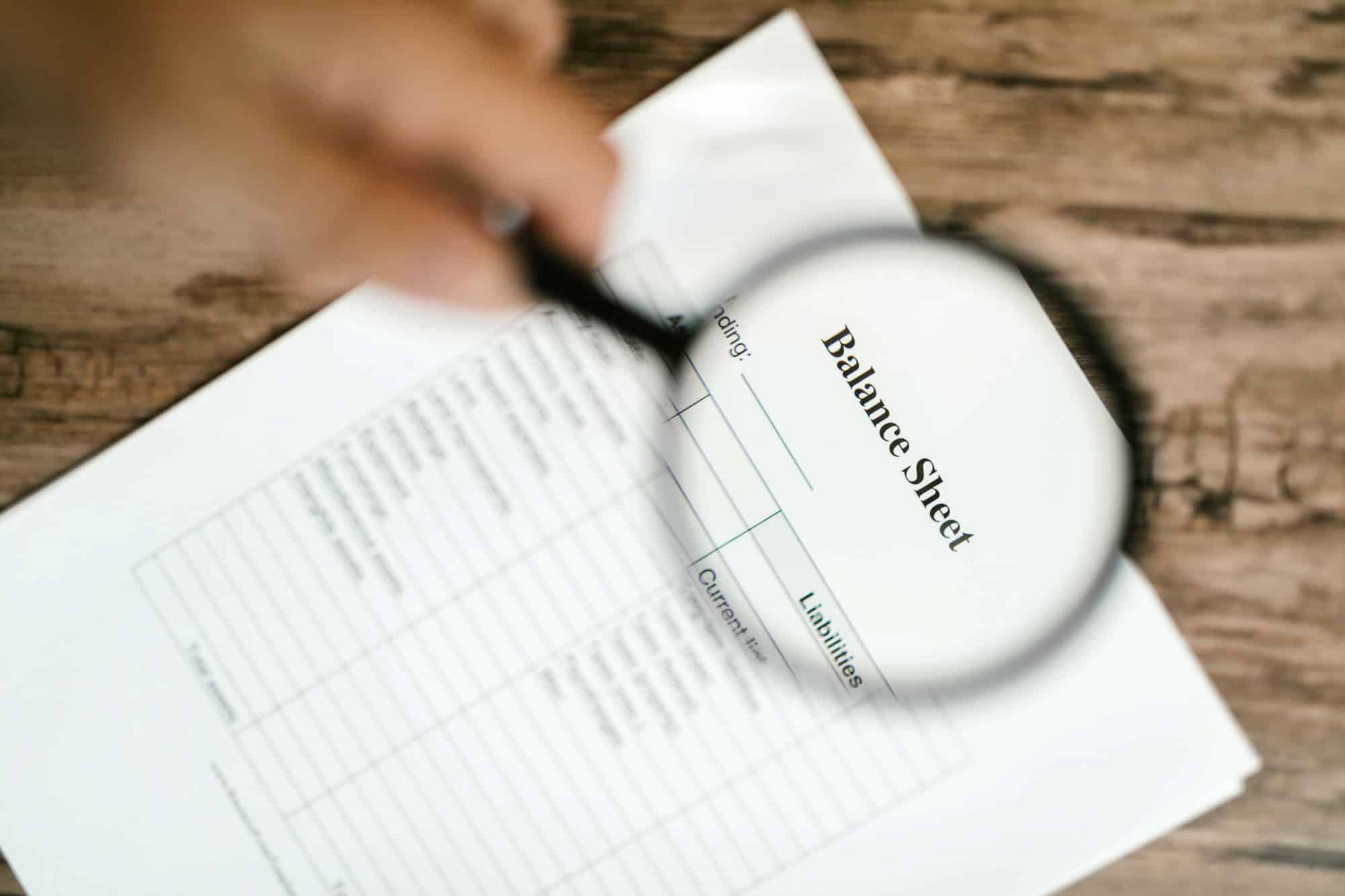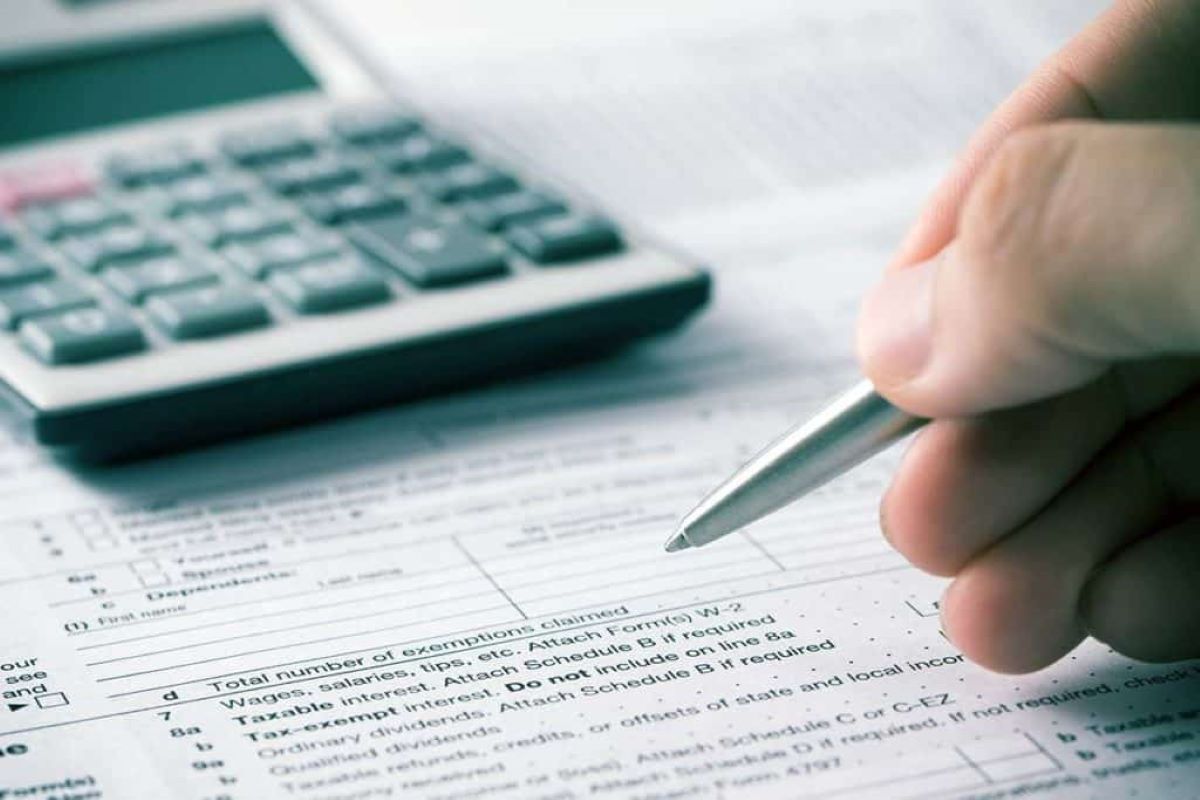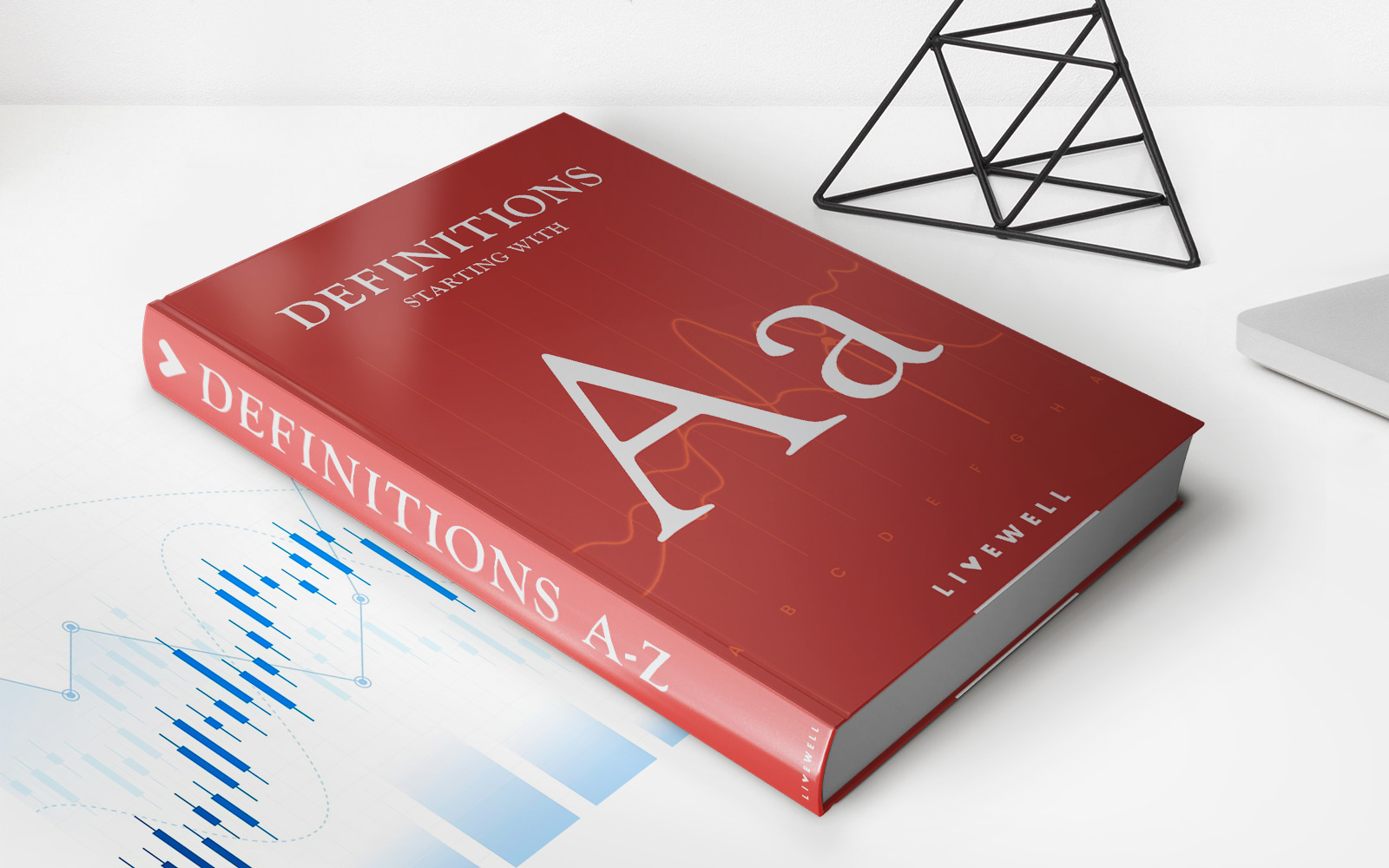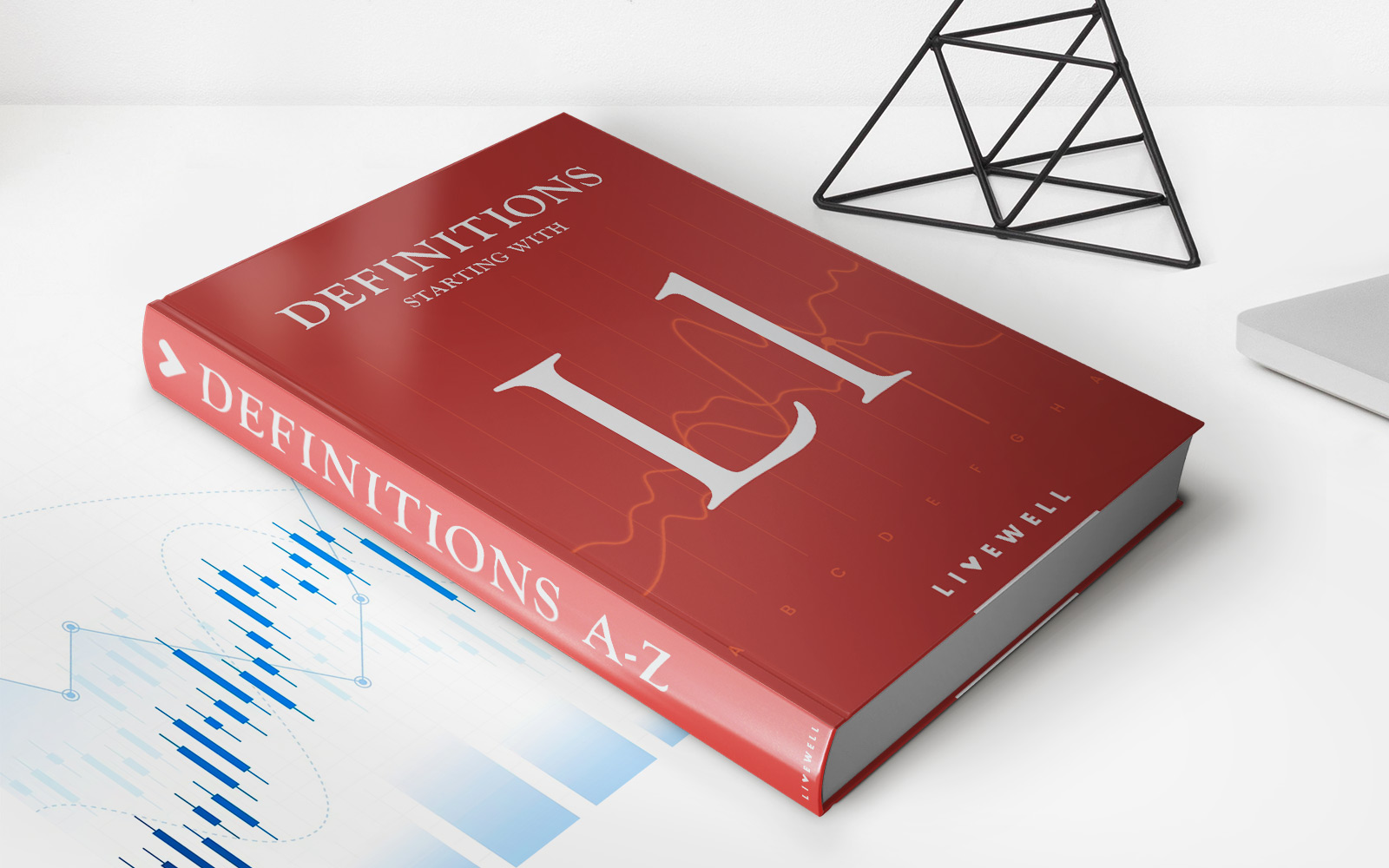Home>Finance>Where Do Section 897 Ordinary Dividends Go On A Tax Return?
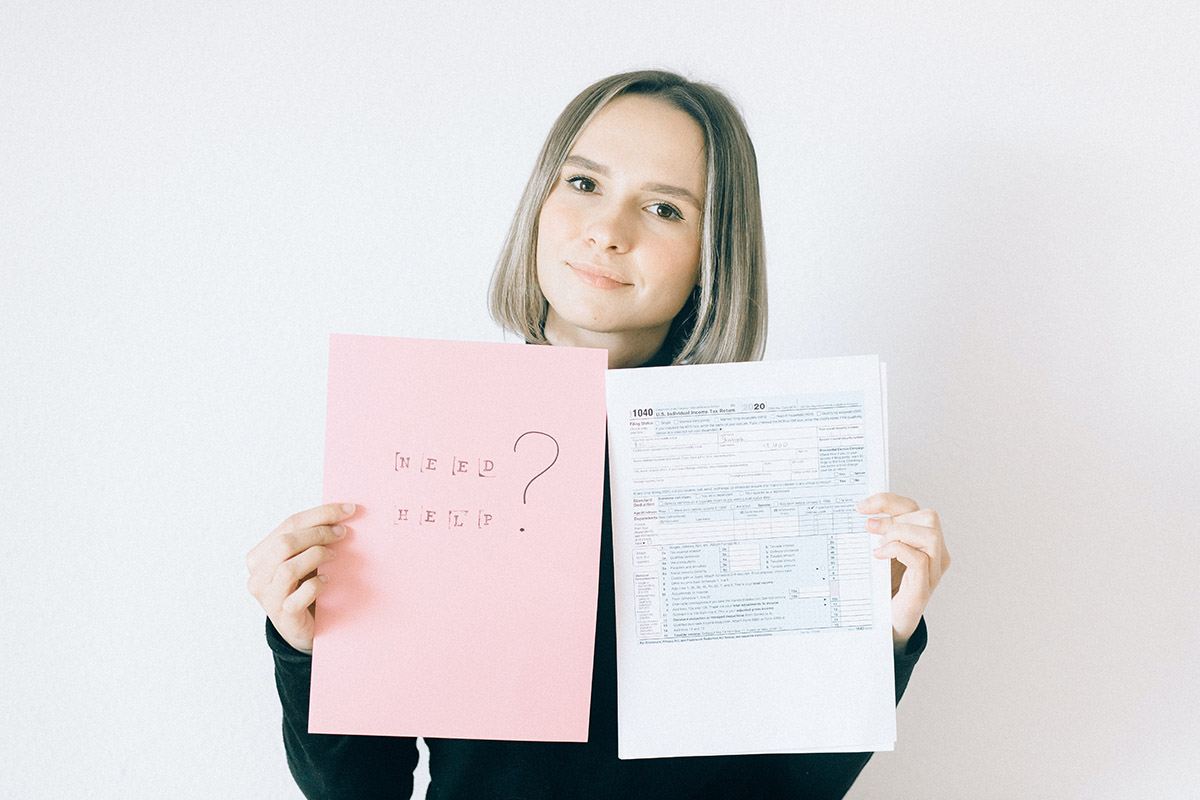

Finance
Where Do Section 897 Ordinary Dividends Go On A Tax Return?
Published: October 29, 2023
Learn how to report Section 897 ordinary dividends on your tax return and ensure accurate financial filings. Explore our finance guide for expert advice.
(Many of the links in this article redirect to a specific reviewed product. Your purchase of these products through affiliate links helps to generate commission for LiveWell, at no extra cost. Learn more)
Table of Contents
- Introduction
- Section 897: Understanding the Basics
- Reporting Section 897 Ordinary Dividends on a Tax Return
- Form 1040: Individual Income Tax Return
- Schedule B: Interest and Ordinary Dividends
- Reporting Section 897 Ordinary Dividends on Schedule B
- Box 1a: Section 897 Dividends on Form 1099-DIV
- Box 1b: Section 897 Dividends Tax Withheld on Form 1099-DIV
- Reporting Section 897 Ordinary Dividends on Schedule D
- Capital Gains and Losses
- Reporting Section 897 Ordinary Dividends on Form 8949
- Form 8824: Like-Kind Exchanges
- Conclusion
Introduction
In the world of finance, understanding tax regulations and the intricacies of reporting income is crucial. One area that often confuses taxpayers is how to properly report section 897 ordinary dividends on their tax returns. Section 897 of the Internal Revenue Code (IRC) provides guidelines for the treatment of ordinary dividends paid by companies subject to taxation on income that is effectively connected with a U.S. trade or business.
Knowing where and how to report these ordinary dividends on your tax return is essential to ensure compliance and avoid potential penalties or audits. In this article, we will walk you through the basics of section 897, the specific forms and schedules to use, and the proper reporting methods. Whether you are an individual taxpayer or a tax professional looking for guidance, this article will provide the information you need to accurately report section 897 ordinary dividends on your tax return.
It’s important to note that tax regulations can be complex and subject to change. This article is intended as a general guide, but we strongly recommend consulting with a tax professional or reviewing the latest IRS publications for the most up-to-date information and personalized advice.
Section 897: Understanding the Basics
Section 897 of the Internal Revenue Code (IRC) deals with the taxation of income derived from real property situated in the United States. It applies to foreign individuals, corporations, partnerships, and other entities that own U.S. real estate or derive rental income from U.S. real property.
When it comes to ordinary dividends, section 897 focuses on companies that are subject to U.S. tax on income that is effectively connected with a U.S. trade or business. These companies are often referred to as “U.S. real property holding corporations” (USRPHCs).
Under section 897, ordinary dividends paid by USRPHCs are subject to specific tax treatment. These dividends are treated as effectively connected income (ECI) and are subject to regular income tax rates. This means that non-resident individuals or foreign corporations who receive section 897 ordinary dividends may be required to report and pay taxes on this income to the IRS.
The purpose of section 897 is to ensure that foreign entities or individuals who own U.S. real estate or derive income from U.S. real property are subject to U.S. taxation on that income. By treating section 897 ordinary dividends as ECI, the IRS aims to capture and tax the income generated from these U.S. real property investments.
It’s important to note that not all dividends paid by USRPHCs are classified as section 897 ordinary dividends. Only dividends that meet specific criteria outlined in the IRC fall under this category. It is also worth mentioning that section 897 applies to both publicly traded companies and privately held entities.
Understanding the basics of section 897 is crucial for taxpayers who receive ordinary dividends from USRPHCs or have an ownership stake in these types of corporations. By familiarizing yourself with the regulations, you can ensure that you accurately report and pay the appropriate taxes on section 897 ordinary dividends.
Reporting Section 897 Ordinary Dividends on a Tax Return
When it comes to reporting section 897 ordinary dividends on your tax return, there are specific forms and schedules that need to be used. The two main forms involved are Form 1040, the Individual Income Tax Return, and Schedule B, which is used to report interest and ordinary dividends.
Form 1040 serves as the foundation for reporting your income, deductions, and credits. Schedule B, on the other hand, focuses specifically on reporting interest and ordinary dividends earned throughout the tax year.
When completing your tax return, it’s important to ensure that you accurately report section 897 ordinary dividends to avoid any potential issues with the IRS. Let’s dive into the details of how to report section 897 ordinary dividends on your tax return.
First, you will need to look for the necessary information provided to you by the USRPHC. This will typically include a Form 1099-DIV, which reports the dividend payments made to you during the tax year.
On Form 1099-DIV, section 897 ordinary dividends are reported in Box 1a. This box indicates the total amount of section 897 ordinary dividends received from the USRPHC. It’s important to carefully review this information and ensure its accuracy before proceeding with your tax return.
Next, you will report the section 897 ordinary dividends on Schedule B of your Form 1040. Schedule B provides a detailed breakdown of your interest and ordinary dividends, allowing the IRS to determine the appropriate tax treatment for these types of income.
Within Schedule B, you will find Part II, which is specifically designated for reporting ordinary dividends. Here, you will report the total amount of section 897 ordinary dividends received during the tax year. Make sure to transfer the amount from Box 1a of your Form 1099-DIV to the appropriate line in Part II of Schedule B.
It’s important to note that if there are any section 897 dividends withheld for taxes, you will also need to report this information on your tax return. This information can be found in Box 1b of your Form 1099-DIV, which corresponds to the amount of section 897 dividends tax withheld.
Reporting section 897 ordinary dividends on your tax return may also require additional forms and schedules, depending on your specific tax situation. For example, if you have any capital gains or losses related to section 897 dividends, you will need to report them on Schedule D and Form 8949.
Overall, reporting section 897 ordinary dividends on your tax return involves accurately transferring the information provided to you on the Form 1099-DIV to the appropriate forms and schedules. Paying close attention to detail and ensuring the accuracy of these reports will help you avoid any potential issues with the IRS and ensure compliance with section 897 regulations.
Form 1040: Individual Income Tax Return
Form 1040 is the primary form used by individuals to report their income, deductions, and credits to the Internal Revenue Service (IRS). When it comes to reporting section 897 ordinary dividends on your tax return, Form 1040 plays a central role in capturing this information.
When completing your Form 1040, you will need to ensure that you accurately report all sources of income, including section 897 ordinary dividends received from USRPHCs. Here’s a breakdown of how section 897 ordinary dividends are reported on Form 1040:
1. Start by filling out the basic information at the top of the Form 1040, such as your name, address, and Social Security number.
2. Moving on to the income section of the form, you will report your section 897 ordinary dividends on line 9a. This line corresponds to the total amount of ordinary dividends received during the tax year.
3. If you had any section 897 dividends withheld for taxes, you will report this amount on line 9b. This ensures that the IRS is aware of any taxes already paid on your section 897 ordinary dividends.
4. In addition to reporting section 897 ordinary dividends on line 9a and 9b, you may have other types of income to report on Form 1040 as well. Make sure to carefully review the instructions and accurately report all sources of income to avoid any discrepancies.
5. Finally, after reporting your income, you will proceed to complete the rest of Form 1040, including deductions, tax credits, and any other relevant information.
It’s important to note that depending on your individual tax situation, you may need to attach additional schedules or forms to your Form 1040. For example, if you have capital gains or losses related to section 897 ordinary dividends, you will need to complete Schedule D and Form 8949 to report these transactions.
Completing Form 1040 accurately and reporting section 897 ordinary dividends is crucial to ensure compliance with IRS regulations. Mistakes or omissions could result in underpayment or overpayment of taxes, potentially triggering penalties or audits. Therefore, it is advisable to seek the assistance of a tax professional or use tax software that can help guide you through the process and minimize errors.
By diligently reporting your section 897 ordinary dividends on Form 1040, you can fulfill your tax obligations and avoid any potential issues with the IRS. Remember to keep all supporting documentation and records for your section 897 ordinary dividends in case of future inquiries or requests for verification.
Schedule B: Interest and Ordinary Dividends
Schedule B is an additional form that is used to report interest and ordinary dividends received during the tax year. It provides a detailed breakdown of these types of income and helps the IRS determine the appropriate tax treatment.
When it comes to reporting section 897 ordinary dividends, you will need to complete the relevant sections of Schedule B. Here’s what you need to know:
1. Start by filling out the basic information at the top of Schedule B, including your name, Social Security number, and other identifying details.
2. Move on to Part II of Schedule B, which is specifically designated for the reporting of ordinary dividends. On this part, you will see several lines that allow you to report the different sources of ordinary dividends you received throughout the tax year.
3. Look for the specific line that corresponds to section 897 ordinary dividends. Depending on the version of Schedule B you are using, this line may vary. It’s essential to consult the instructions or refer to the specific line designated for section 897 dividends.
4. Report the total amount of section 897 ordinary dividends received during the tax year on the appropriate line. Make sure to accurately transfer this information from your Form 1099-DIV, specifically Box 1a, which provides the total amount of section 897 dividends received.
5. Additionally, if any taxes were withheld from your section 897 dividends, you will need to report this information on line 10 of Part II. This ensures that the IRS is aware of any taxes already paid on your section 897 ordinary dividends.
It’s important to note that Schedule B is not a standalone form. It must be attached to your Form 1040 when you file your tax return. Ensure that you complete all necessary information accurately and provide any additional details required.
Remember, the purpose of Schedule B is to provide a comprehensive breakdown of your interest and ordinary dividends to assist the IRS in assessing your tax liability accurately. By completing Schedule B and accurately reporting your section 897 ordinary dividends, you are fulfilling your reporting obligations and helping to ensure compliance with tax regulations.
If you have received ordinary dividends from USRPHCs and are uncertain about how to fill out Schedule B correctly, it is recommended to seek guidance from a tax professional or use reputable tax software that can guide you through the process.
By following the instructions and accurately reporting your section 897 ordinary dividends on Schedule B, you can ensure compliance with IRS regulations and avoid potential issues or discrepancies in the future.
Reporting Section 897 Ordinary Dividends on Schedule B
Schedule B is an essential form when it comes to reporting interest and ordinary dividends on your tax return. It provides a detailed breakdown of these types of income, including section 897 ordinary dividends received from U.S. real property holding corporations (USRPHCs).
When reporting section 897 ordinary dividends on Schedule B, follow these steps to ensure accurate reporting:
1. Begin by entering your personal information at the top of the Schedule B form, including your name, Social Security number, and other required details.
2. Proceed to Part II, which specifically deals with the reporting of ordinary dividends. Here, you will find various lines corresponding to different sources of ordinary dividends.
3. Locate the line that specifically relates to section 897 ordinary dividends. The line number may vary depending on the version of Schedule B you are using, so refer to the instructions or look for a line specifically dedicated to section 897 dividends.
4. Enter the total amount of section 897 ordinary dividends you received during the tax year on the appropriate line in Part II. You can find this information on Box 1a of your Form 1099-DIV, which indicates the total section 897 dividends received.
5. If any taxes were withheld from your section 897 dividends, enter that amount on line 10 of Part II. This ensures the IRS has a record of any taxes already paid on your section 897 ordinary dividends.
It’s important to remember that Schedule B is an attachment to your Form 1040, so ensure that you accurately complete all necessary information and include it when you file your tax return.
Additionally, if you received section 897 dividends from multiple sources, you must report each source separately on Schedule B. This means you may have multiple lines dedicated to section 897 dividends if you received them from multiple USRPHCs.
Properly reporting section 897 ordinary dividends on Schedule B is crucial for ensuring compliance with IRS regulations. Failing to report or inaccurately reporting these dividends can result in penalties or audits.
If you are unsure about how to fill out Schedule B correctly or have complex tax situations involving section 897 dividends, it is advisable to seek guidance from a tax professional or reputable tax software. They can help ensure accurate reporting and compliance with IRS guidelines.
By following the guidelines and accurately reporting section 897 ordinary dividends on Schedule B, you can fulfill your reporting obligations and minimize the risk of any issues with the IRS related to these dividends.
Box 1a: Section 897 Dividends on Form 1099-DIV
Form 1099-DIV is a crucial document that provides information about the dividends you received during the tax year. When it comes to section 897 dividends, Box 1a is where you will find the specific amount reported.
Here’s what you need to know about Box 1a and reporting section 897 dividends on Form 1099-DIV:
1. Form 1099-DIV is typically issued by U.S. real property holding corporations (USRPHCs) to individuals who have received dividend payments during the tax year.
2. Locate Box 1a on Form 1099-DIV. This box is specifically designated for reporting section 897 dividends.
3. The amount reported in Box 1a represents the total section 897 dividends you received from the USRPHCs during the tax year.
4. It’s important to carefully review the information in Box 1a to ensure its accuracy. Confirm that the amount reported aligns with your records of section 897 dividends received.
5. When filing your tax return, you will need to transfer the amount from Box 1a of your Form 1099-DIV to the appropriate line on your tax forms, such as Schedule B and Form 1040.
It’s crucial to correctly report the section 897 dividends from Box 1a of your Form 1099-DIV to ensure accurate tax reporting. Failing to report this information or reporting it incorrectly can lead to discrepancies in your tax return and potential issues with the IRS.
Keep in mind that while Form 1099-DIV provides important information for reporting section 897 dividends, it is not sent to the IRS unless it contains withholding information. However, it is essential to keep a copy of your Form 1099-DIV for your records, as the IRS may request it during an audit or if they have any inquiries regarding your tax return.
If you have received section 897 dividends from multiple USRPHCs, you may receive multiple Form 1099-DIVs, each with their own reporting in Box 1a. Ensure that you carefully track and report the section 897 dividends from each Form 1099-DIV on your tax return.
Taking the time to accurately report section 897 dividends from Box 1a of your Form 1099-DIV on your tax forms ensures compliance with IRS regulations and helps avoid any potential issues or discrepancies in the future.
Box 1b: Section 897 Dividends Tax Withheld on Form 1099-DIV
Form 1099-DIV is an important document provided to taxpayers that details the dividends received during the tax year. When it comes to section 897 dividends, Box 1b is where you will find information about any taxes withheld.
Here’s what you need to know about Box 1b and reporting section 897 dividends tax withheld on Form 1099-DIV:
1. Form 1099-DIV is typically issued by U.S. real property holding corporations (USRPHCs) to individuals who have received dividend payments during the tax year.
2. Locate Box 1b on Form 1099-DIV. This box is specifically designated for reporting section 897 dividends tax withheld.
3. The amount reported in Box 1b represents the total amount of tax withheld from your section 897 dividends by the USRPHC.
4. It’s important to carefully review the information in Box 1b to ensure its accuracy. Confirm that the amount reported aligns with your records of tax withheld from section 897 dividends.
5. It is crucial to report the section 897 dividends tax withheld from Box 1b of your Form 1099-DIV on your tax return. This can help ensure the accuracy of your tax liability and minimize any potential discrepancies.
When reporting section 897 dividends tax withheld, you may need to provide this information on various forms and schedules depending on your individual tax situation.
For example, if you are using Form 1040, you would report the section 897 dividends tax withheld in the appropriate section related to dividends and other income. Additionally, if you are using Schedule B to report your interest and ordinary dividends, you may need to enter the section 897 dividends tax withheld on the respective line in Part II.
It’s important to accurately report the section 897 dividends tax withheld from Box 1b of your Form 1099-DIV to ensure proper tax reporting. If this information is not reported or reported incorrectly, it may result in discrepancies between your tax return and the records held by the IRS, potentially leading to penalties or audits.
While Form 1099-DIV is not submitted to the IRS unless it contains withholding information, it is crucial to retain a copy of the form for your records. The IRS may request it for verification purposes or in the event of an audit.
By understanding and accurately reporting the section 897 dividends tax withheld from Box 1b of your Form 1099-DIV, you can ensure compliance with IRS regulations and minimize potential issues or discrepancies in your tax return.
Reporting Section 897 Ordinary Dividends on Schedule D
Schedule D is an important form used to report capital gains and losses from various transactions, including the sale of investments. When it comes to reporting section 897 ordinary dividends, you may need to use Schedule D if you have capital gains or losses associated with these dividends.
Here’s what you need to know about reporting section 897 ordinary dividends on Schedule D:
1. Start by filling out the top section of Schedule D with your personal information, including your name, Social Security number, and other required details.
2. Proceed to Part I of Schedule D, which is where you will report your short-term capital gains and losses. If you have any short-term capital gains or losses related to section 897 ordinary dividends, enter the appropriate information on the corresponding lines.
3. Similarly, if you have long-term capital gains or losses associated with section 897 ordinary dividends, report them in Part II of Schedule D. Enter the necessary details on the appropriate lines.
4. Make sure to carefully review the instructions on Schedule D to understand which lines are applicable for reporting section 897 dividends. Follow the guidelines and enter the correct amounts in the specified sections.
5. If you have multiple transactions or sources of section 897 dividends, you may need to complete additional Schedules D or attach a separate statement to provide a comprehensive breakdown of each transaction.
6. Remember that reporting section 897 ordinary dividends on Schedule D is typically necessary if you have capital gains or losses associated with these dividends. If you only received these dividends and did not engage in any related transactions, you may not need to complete Schedule D.
It’s important to accurately report your capital gains and losses from section 897 ordinary dividends on Schedule D to ensure compliance with IRS regulations. Mistakes or omissions can result in underpayment or overpayment of taxes, potentially triggering penalties or audits.
If you are unsure about how to fill out Schedule D correctly or have complex tax situations involving section 897 dividends, it is advisable to seek guidance from a tax professional or use reputable tax software. They can help ensure accurate reporting and compliance with IRS guidelines.
By following the instructions and accurately reporting section 897 ordinary dividends on Schedule D, you can fulfill your reporting obligations and minimize the risk of any issues with the IRS related to these dividends
.
Capital Gains and Losses
When it comes to reporting section 897 ordinary dividends, it’s important to understand the concept of capital gains and losses. Capital gains and losses occur when you sell an investment for more or less than its original purchase price. These gains or losses can have tax implications and may need to be reported on your tax return.
If you have capital gains or losses associated with section 897 ordinary dividends, it’s crucial to understand how to report them accurately. Here are the key points to consider:
1. Capital gains: If you sold an investment or property that generated a profit, the resulting gain is considered a capital gain. For example, if you purchased shares of a company subject to section 897 and sold them at a higher price, the profit from that sale is a capital gain.
2. Capital losses: Conversely, if you sold an investment or property and incurred a loss, the resulting amount is considered a capital loss. For instance, if you sold shares of a section 897 company at a lower price than what you initially paid for them, the loss is a capital loss.
3. Net capital gain or loss: To determine your overall capital gain or loss from section 897 dividends, you will need to calculate the net total. This involves subtracting any capital losses from your capital gains. If the resulting amount is positive, you have a net capital gain. If it is negative, you have a net capital loss.
4. Reporting capital gains and losses: To report capital gains and losses associated with section 897 ordinary dividends, you will need to use Schedule D of your tax return. This form allows you to provide a comprehensive breakdown of your capital transactions, including gains or losses from the sale of investments.
5. Follow the instructions: Complete Schedule D accurately and according to the guidelines provided by the IRS. Ensure that you enter the correct amounts and follow the appropriate sections related to section 897 dividends and capital gains or losses.
6. Other forms and schedules: In addition to Schedule D, you may need to complete other forms or schedules depending on your specific tax situation. For example, if you have multiple capital transactions or complex capital gains and losses, you may also need to complete Form 8949 to provide more detailed information.
Properly reporting your capital gains and losses associated with section 897 ordinary dividends is essential for tax compliance. Incorrect reporting or failure to report these transactions can result in penalties or audits by the IRS.
If you are unsure about how to calculate or report your capital gains and losses, it is highly recommended to consult with a tax professional or utilize reputable tax software to ensure accuracy and compliance.
By understanding the concept of capital gains and losses and accurately reporting them on your tax return, you can fulfill your tax obligations and minimize any potential issues or discrepancies related to section 897 dividends.
Reporting Section 897 Ordinary Dividends on Form 8949
Form 8949 is an essential component of your tax return that is used to report capital gains and losses on the sale or exchange of investments or property. If you have section 897 ordinary dividends and need to report capital gains or losses related to these dividends, you may also need to complete Form 8949.
Here’s what you need to know about reporting section 897 ordinary dividends on Form 8949:
1. Start by entering your name and identifying information at the top of Form 8949. Include your Social Security number or taxpayer identification number as required.
2. Proceed to Part I of Form 8949, which is used to report short-term transactions. If you have any short-term capital gains or losses associated with section 897 ordinary dividends, you will enter the details of these transactions on the respective lines in Part I.
3. Move on to Part II of Form 8949, which is used to report long-term transactions. Similarly, if you have any long-term capital gains or losses related to section 897 ordinary dividends, you will provide the necessary information on the appropriate lines in Part II.
4. Make sure to accurately report the details of each transaction, including the date of acquisition, the date of sale, the sales price, the cost or other basis, and the resulting gain or loss. Be sure to include any necessary adjustments or codes as instructed by the IRS.
5. Keep in mind that you may need to attach multiple copies of Form 8949 or use additional pages if you have multiple transactions or sources of section 897 dividends.
6. When completing Form 8949, it’s crucial to follow the instructions provided by the IRS carefully. This will ensure proper reporting and minimize the risk of errors or discrepancies.
Reporting section 897 ordinary dividends on Form 8949 allows you to provide detailed information about the related capital gains or losses. Failing to report these transactions accurately or omitting them from your tax return can result in penalties or audits by the IRS.
If you have complex capital gains or losses or are unsure about how to complete Form 8949 correctly, it is highly recommended to seek guidance from a tax professional or utilize reputable tax software. They can assist you in accurately reporting your section 897 dividends and associated capital gains or losses.
By understanding the requirements and accurately reporting section 897 ordinary dividends on Form 8949, you can fulfill your reporting obligations and minimize any potential issues or discrepancies related to these dividends and their associated transactions.
Form 8824: Like-Kind Exchanges
Form 8824 is an important form used to report like-kind exchanges, also known as 1031 exchanges. A like-kind exchange occurs when you exchange property for another similar property, deferring the recognition of capital gains or losses. If you participated in a like-kind exchange involving section 897 ordinary dividends, it’s crucial to understand how to report it correctly on Form 8824.
Here’s what you need to know about reporting section 897 ordinary dividends on Form 8824:
1. Start by providing your name, Social Security number or taxpayer identification number, and other identifying information at the top of Form 8824.
2. On Part I of Form 8824, you will provide general information about the exchange, including the description of the property relinquished, the description of the like-kind property received, and the date of the exchange.
3. If your like-kind exchange involved the transfer of section 897 ordinary dividends, you will need to carefully analyze whether the exchange qualifies for like-kind treatment. In some cases, the exchange of section 897 ordinary dividends may be considered like-kind if certain criteria are met. Consult with a tax professional or refer to IRS guidelines for specific requirements.
4. Complete the applicable sections of Form 8824 to report the financial aspects of the like-kind exchange, including any cash received or paid, any debt relief, and any adjustments to the basis of the property.
5. Make sure to accurately report the details of the like-kind exchange and any section 897 ordinary dividends involved to ensure compliance with IRS regulations.
Remember that Form 8824 is used specifically for reporting like-kind exchanges and is separate from the forms used to report ordinary dividends or other capital transactions.
If you have participated in a like-kind exchange involving section 897 ordinary dividends, it is highly recommended to seek guidance from a tax professional. They can help navigate the complexities of reporting such exchanges on Form 8824 and ensure proper compliance with IRS guidelines.
By understanding the requirements and accurately completing Form 8824, you can report your section 897 ordinary dividends involved in like-kind exchanges correctly, defer the recognition of capital gains or losses, and fulfill your tax reporting obligations.
Conclusion
Understanding how to report section 897 ordinary dividends on your tax return is crucial for accurate tax compliance. By following the appropriate forms and schedules, you can ensure that you fulfill your reporting obligations and minimize the risk of errors or discrepancies that may trigger penalties or audits by the IRS.
Throughout this article, we have discussed the basics of section 897, the specific forms and schedules involved, and the proper reporting methods. From Form 1040 and Schedule B to Form 1099-DIV and Schedule D or Form 8949, each form plays a vital role in accurately reporting section 897 ordinary dividends on your tax return.
It’s important to carefully review the provided documents, such as Form 1099-DIV, to ensure that the information reported on your tax return is accurate. Pay attention to Box 1a for reporting section 897 dividends and Box 1b for any taxes withheld. Furthermore, consider any capital gains or losses associated with section 897 dividends and report them accordingly on Schedule D or Form 8949.
While this article offers valuable guidance, it’s important to note that tax regulations can be complex and subject to change. Therefore, it is always recommended to consult with a tax professional or review the latest IRS publications for personalized advice and up-to-date information.
By accurately reporting section 897 ordinary dividends on your tax return, you ensure compliance with IRS regulations and demonstrate your commitment to fulfilling your tax obligations. Remember to retain all relevant documentation and records for future reference or if the IRS requests additional information.
Reporting section 897 ordinary dividends may seem intimidating at first, but with the right knowledge and guidance, you can navigate the process effectively. Remember to keep updated with any changes in tax laws and rely on trusted resources to ensure accurate reporting.
Ultimately, by taking the time to properly report your section 897 ordinary dividends, you can maintain compliance, fulfill your tax responsibilities, and enjoy peace of mind during tax season.




